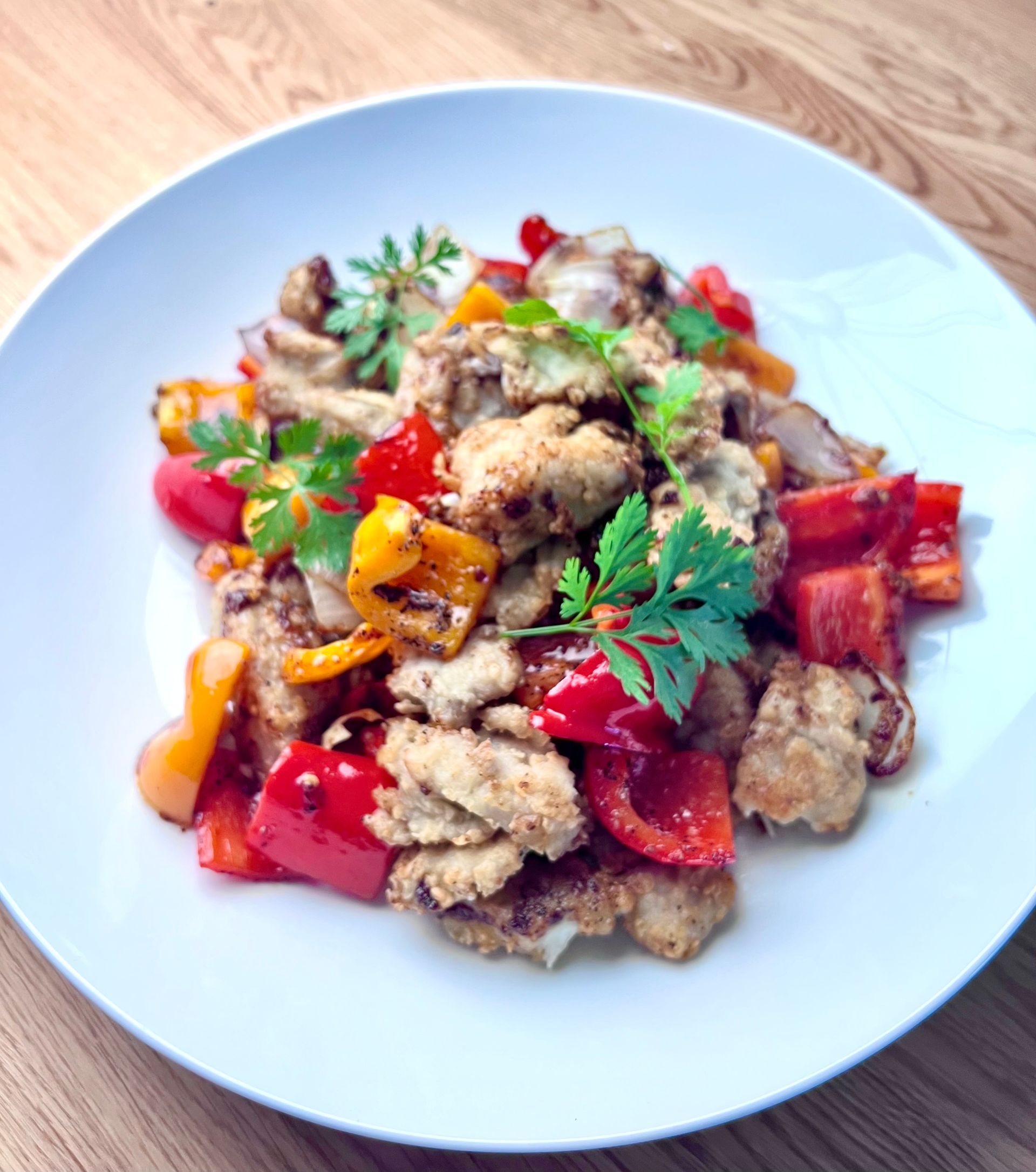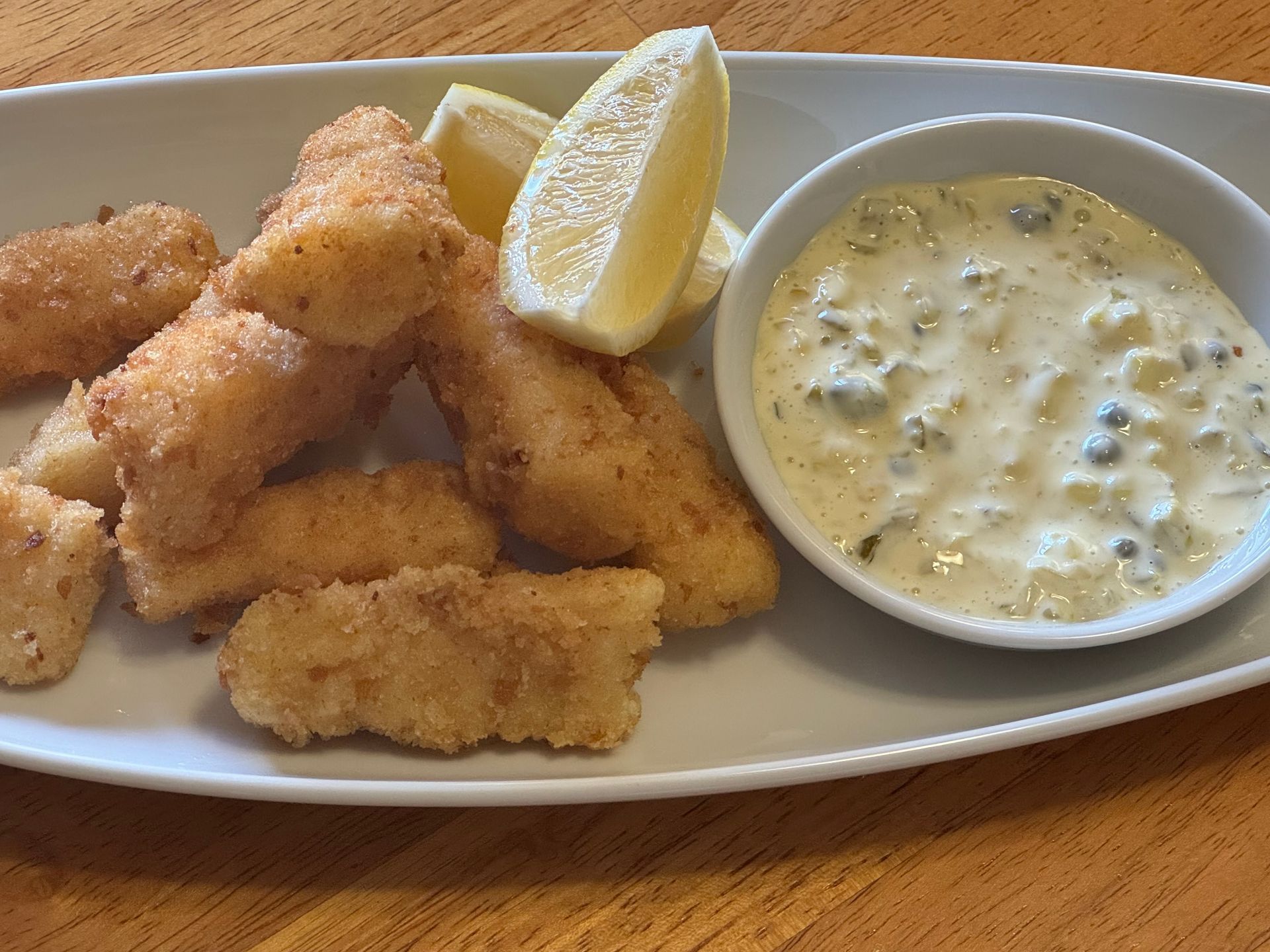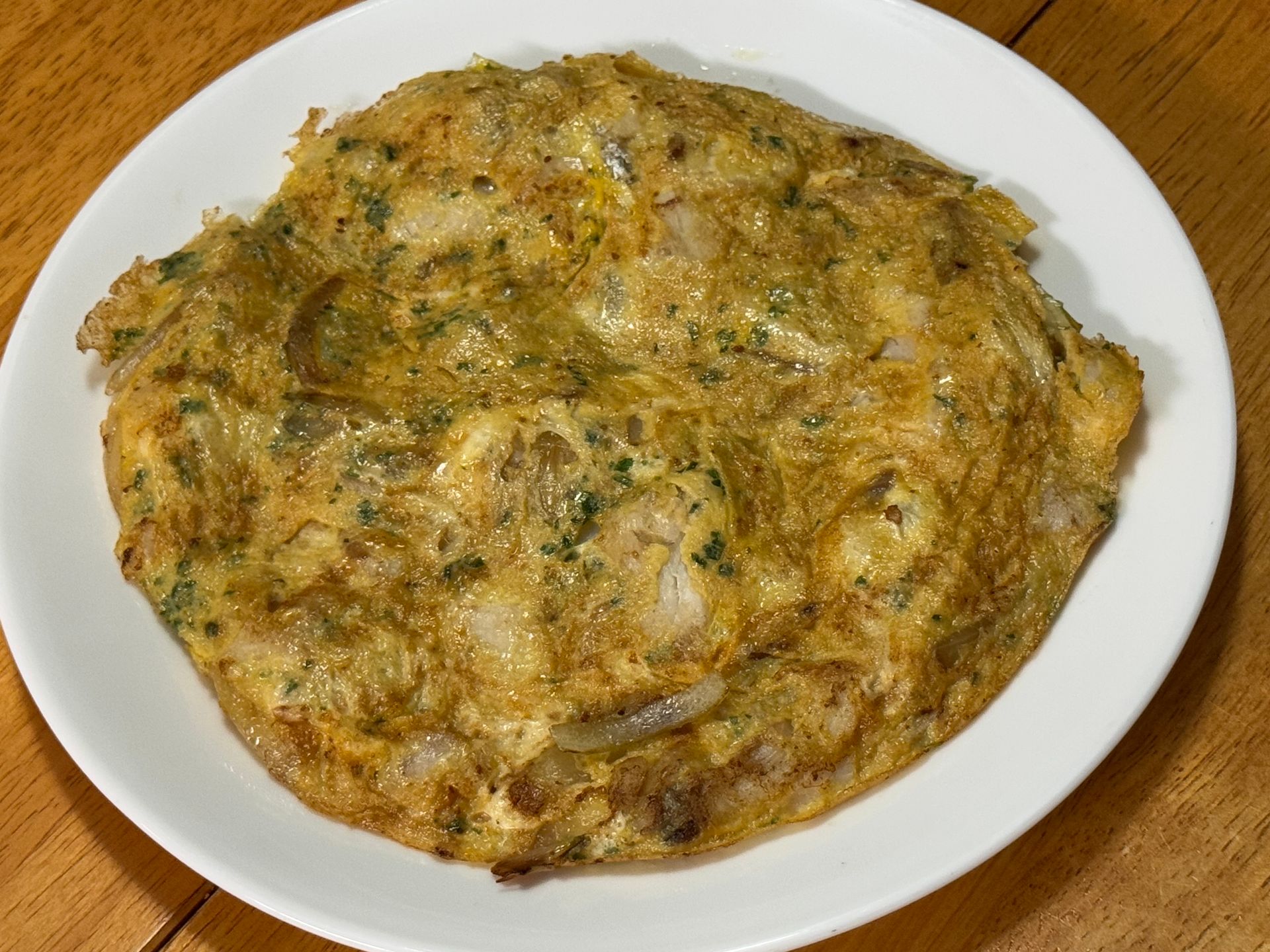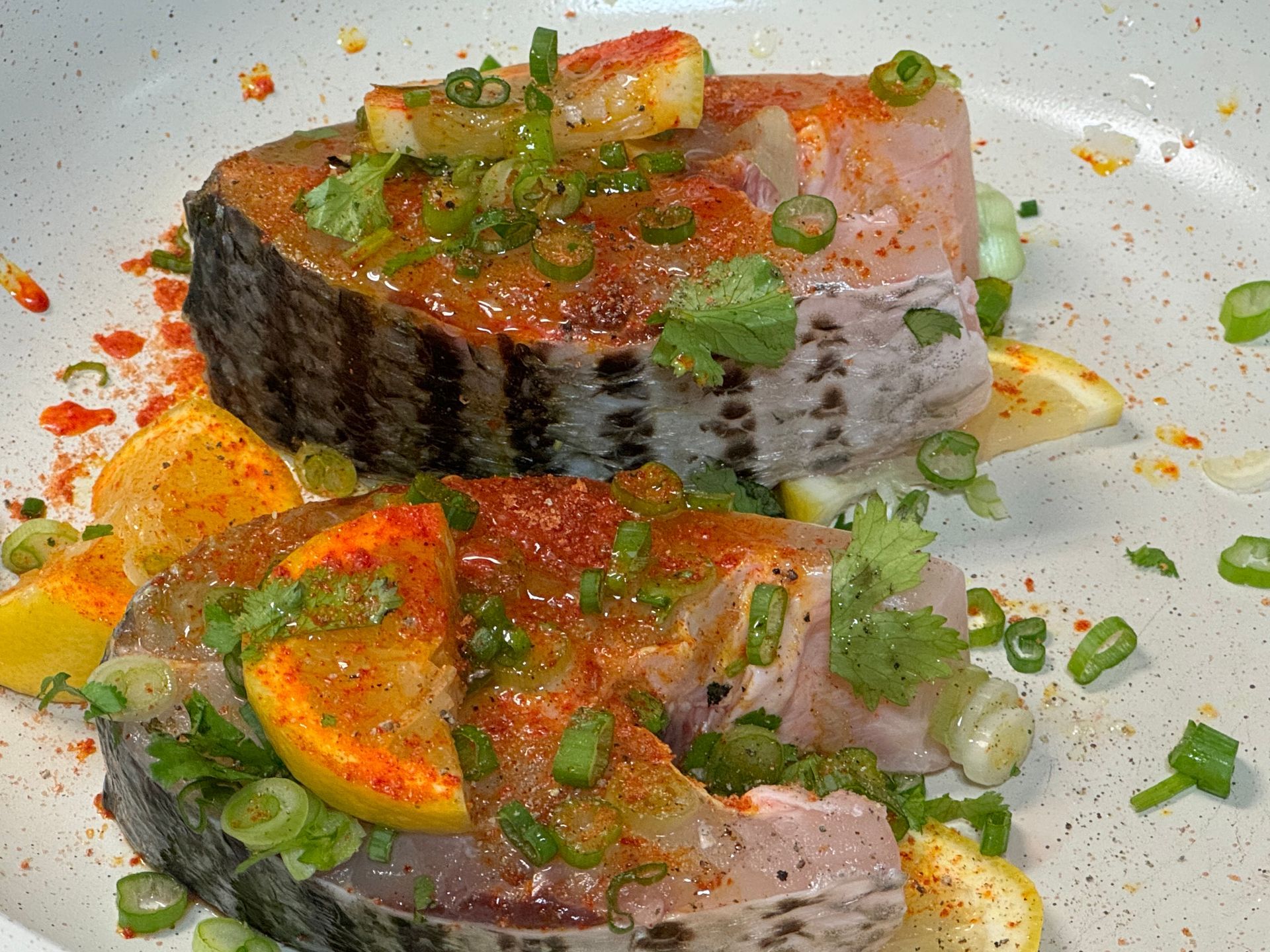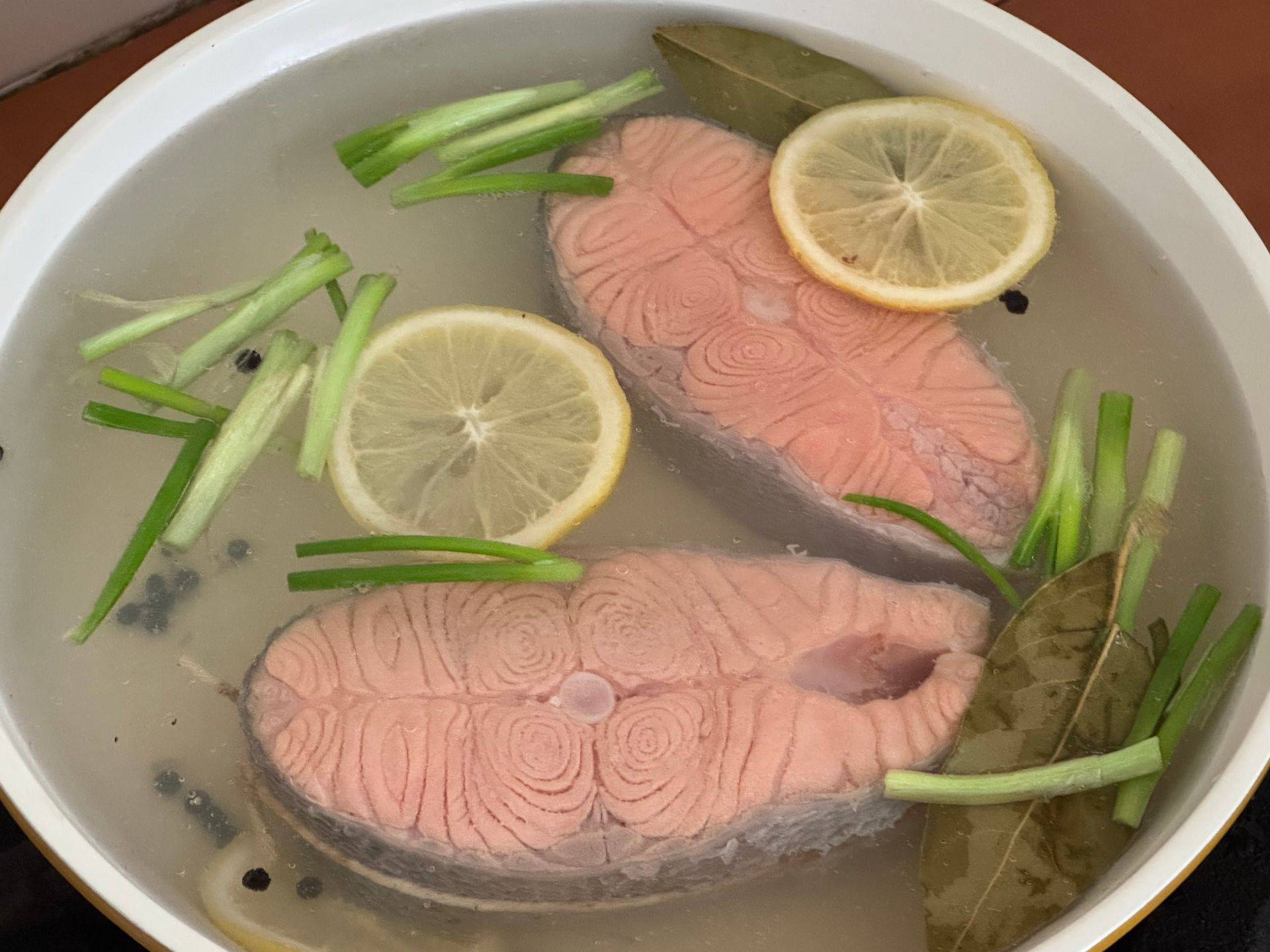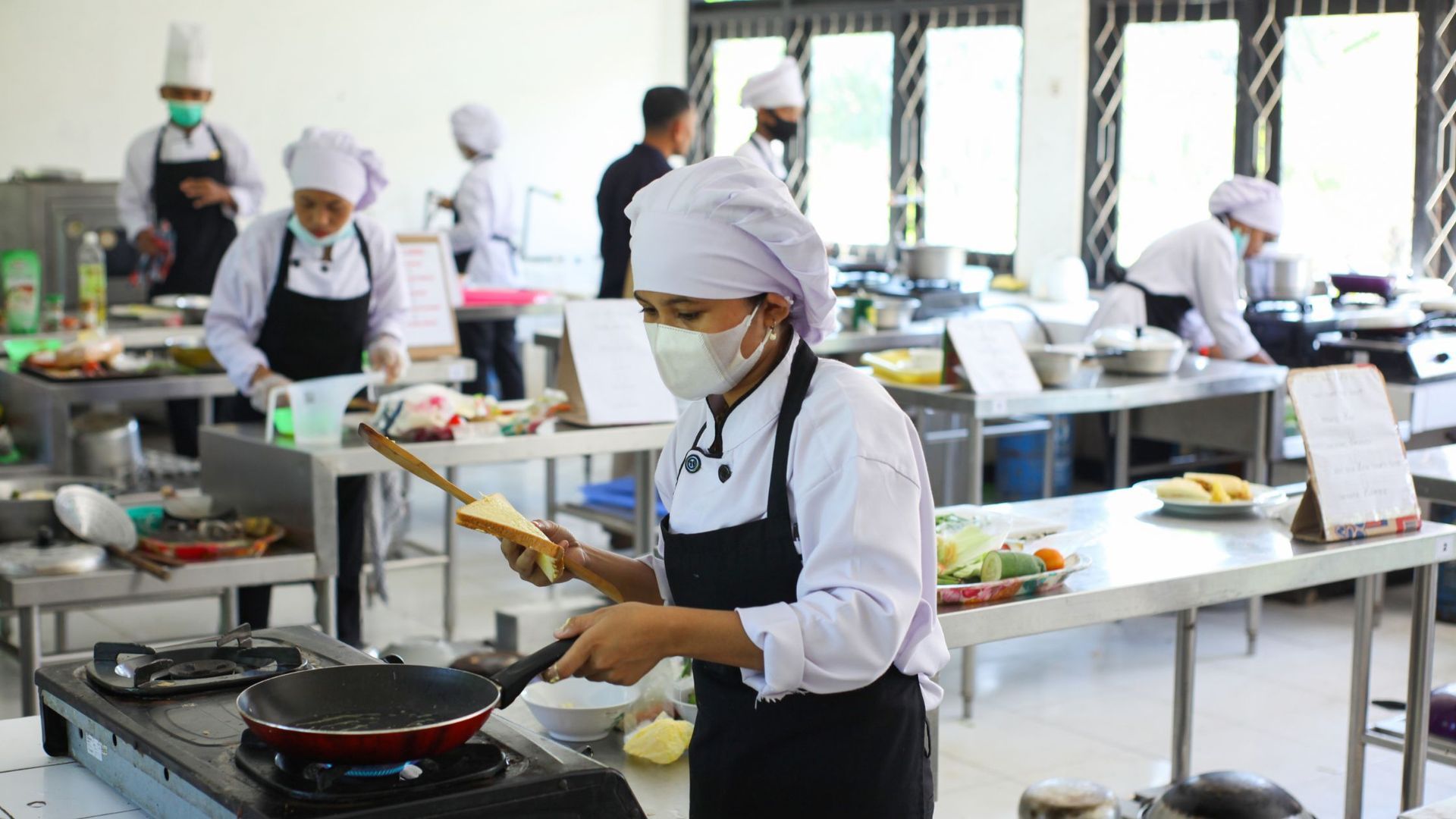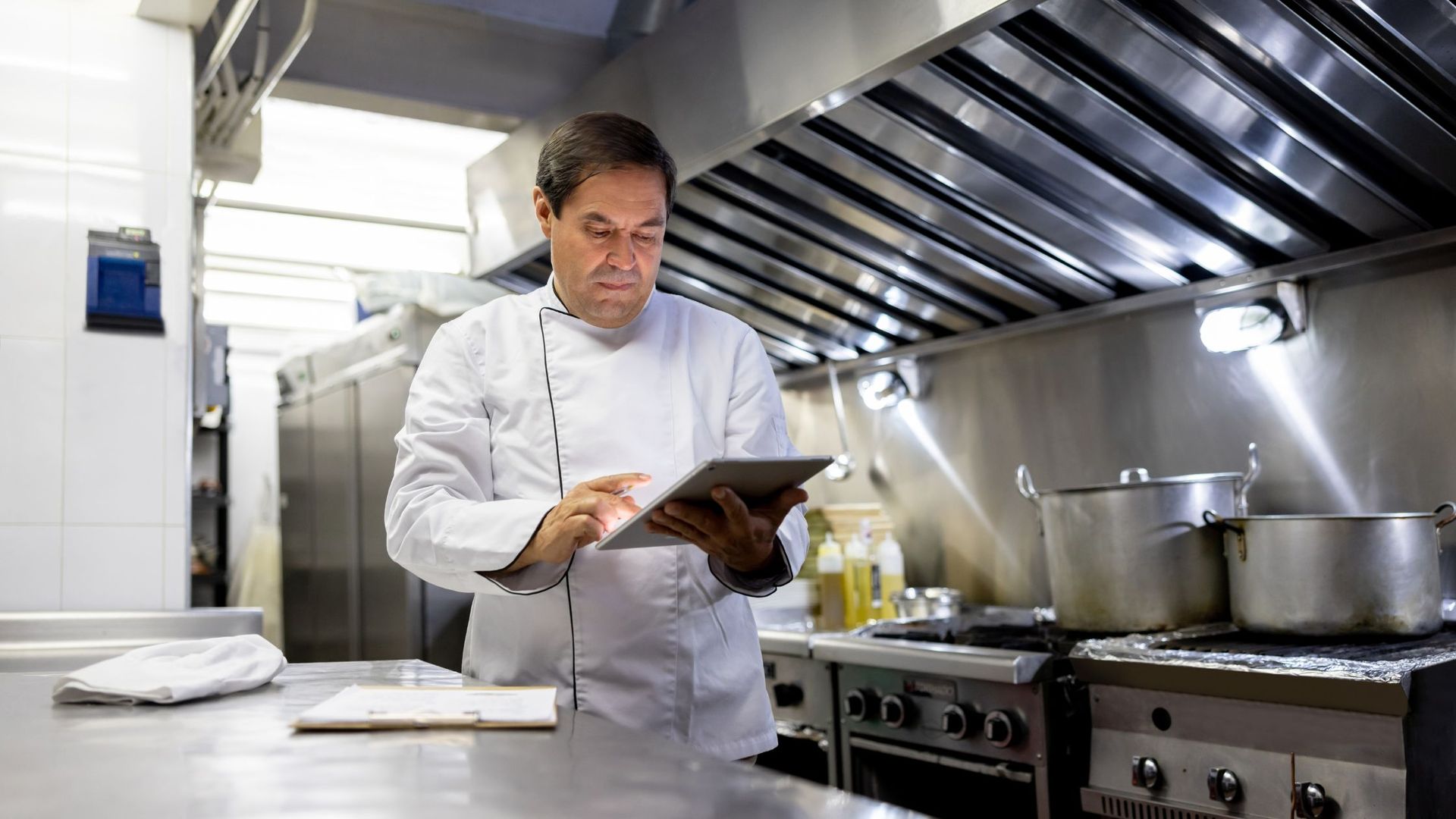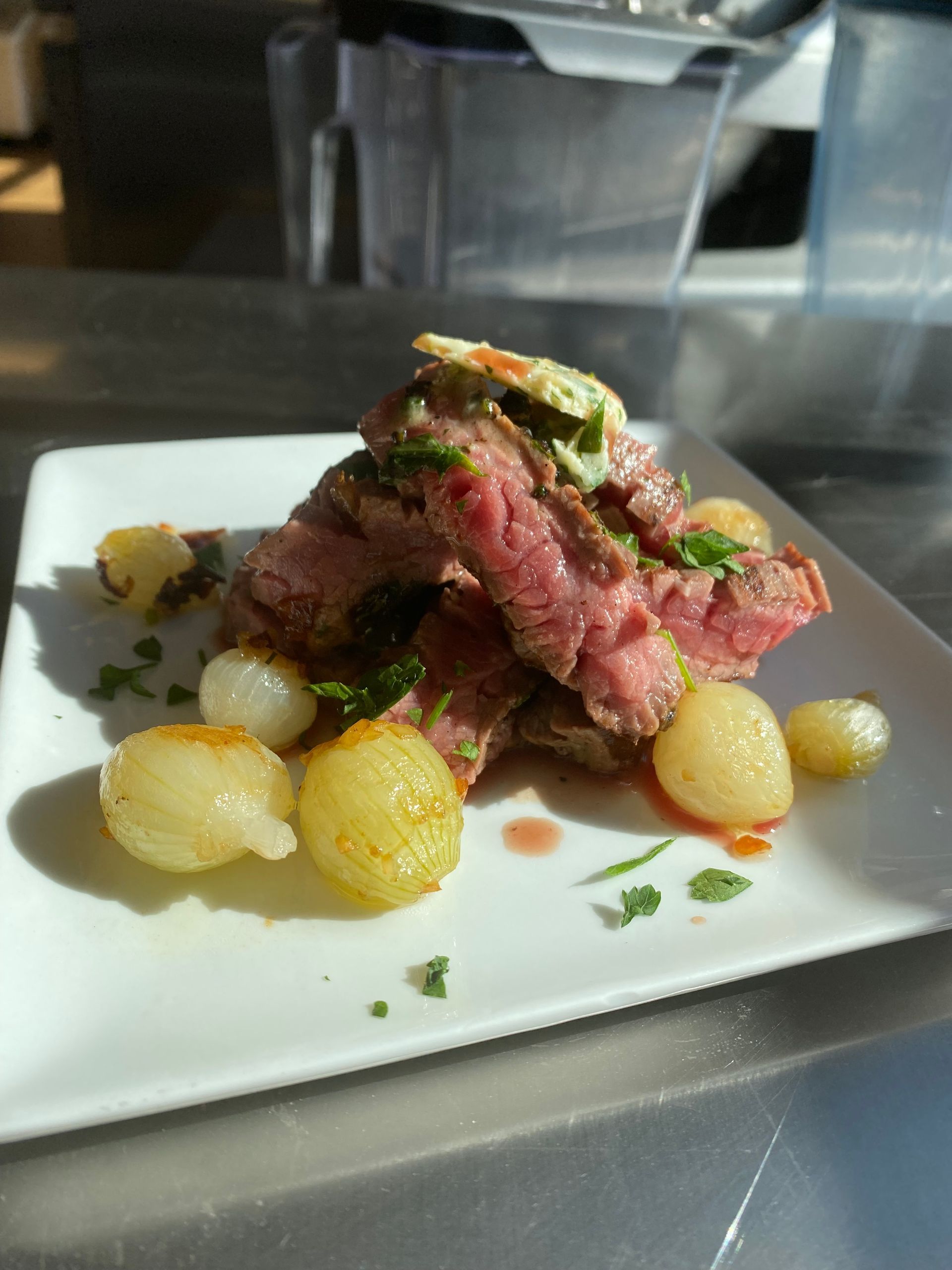
A popular way to serve tougher cuts of grilled steak is to slice it thinly, against the grain after resting so it's much more convenient for the guest to enjoy their meal.
Flank Steak
There are many cuts of beef which are great for grilling. Several cuts of beef such as filet mignon, rib eye, NY steaks etc... are very tender but very expensive.
Beef cuts such as flank steak (also called London broil), skirt steak, hanger steak, flat iron steak ... are extremely flavorful, more affordable but require a little extra culinary finesse to produce a tender, delicious meal. Flank steak is probably the most popular. Flank steaks can be grilled, broiled or braised.
I generally marinate flank steak for about an hour without salt... and let the meat come to ambient temperature. I add salt just before I begin to grill.
Prep Time: 1 hour
Cooking Time: 20 min (grilling/ resting)
Yield: 4 portions
Ingredients
2 lbs. Flank steak
Marinade:
4 oz. Olive oil
1 Tbsp Black pepper
1 Tbsp Ginger root, fresh, peeled & minced (optional)
3 Tbsp Shallots, minced
1 Tbsp Garlic, chopped
2 Tbsp Green onions, sliced thinly
2 Tbsp Herbs, chopped (parsley or cilantro or rosemary)
tt Kosher Salt
Compound butter:
1 lb Butter, lightly salted, room temperature
1/2 tsp Kosher Salt
1/4 tsp Cracked Black Pepper
1 Tbsp Fresh Herbs, chopped (parsley or cilantro or rosemary)
How to prepare Grilled Flank Steak
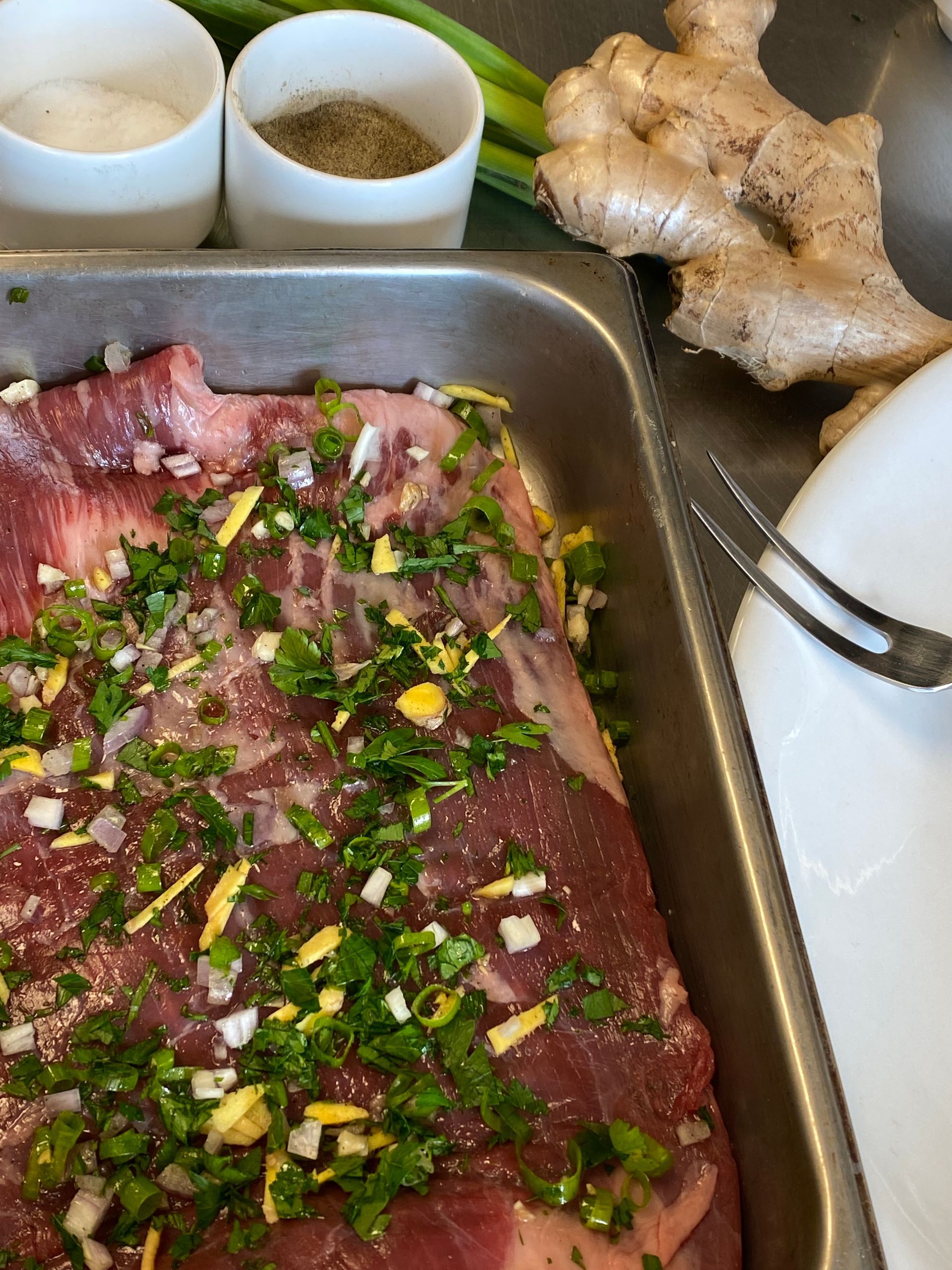
Step 1
Place all of the marinade ingredients into a bowl and blend. Place the flank steak into a pan and cover with the marinade, invert so the meat is completely covered.
Let sit at ambient temperature (maybe 60-70 °F) for 20-60 minutes.
While the steak is marinating, prepare the compound butter by blending all of the ingredients together. Place into a bowl or roll into a log (in parchment or plastic wrap) and refrigerate.
Slice off a piece and place onto the steak after cooking to add flavor and moisture.
Step 2
Heat the grill to medium high; scrub the grill and then gently oil to avoid sticking. The coals should not be smoking or have flames when you grill the meat, you should grill on red hot coals. You can add dried herbs or small pieces of wood to create a smoke/grilled flavor if you like.
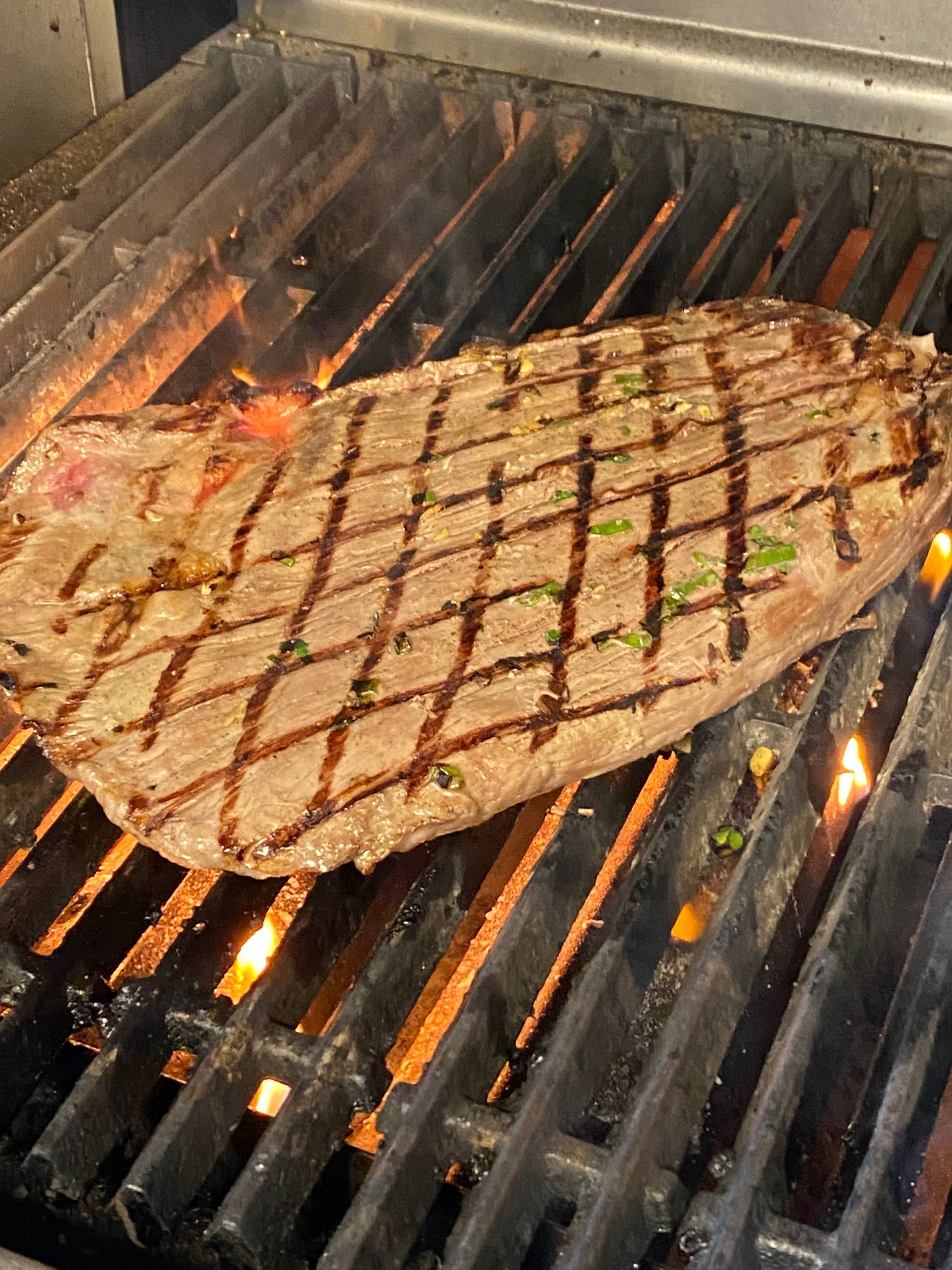
Step 3
Season the flank steak with salt and place onto the grill (tongs are great for this) in a hot area above the coals. Grill for 3 minutes and then carefully lift the meat and rotate to create cross hatch marks. Place back onto the grill and cook for 2 more minutes. Invert and repeat. Basically continue cooking to reach the desired temperature you enjoy for your meat.

Step 4
It's important to let the meat rest for a few minutes so the juices redistribute into the muscles.... I like to top the steak with seasoned butter (compound butter) to add some additional flavor and mouthfeel. Slice against the grain thinly and enjoy.


